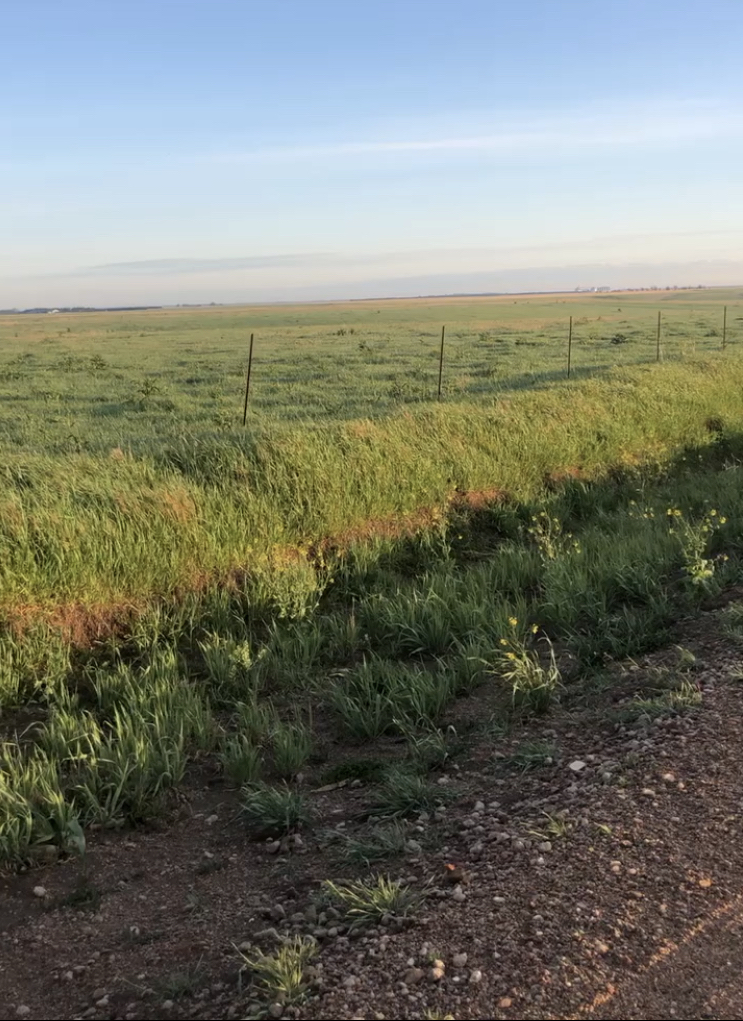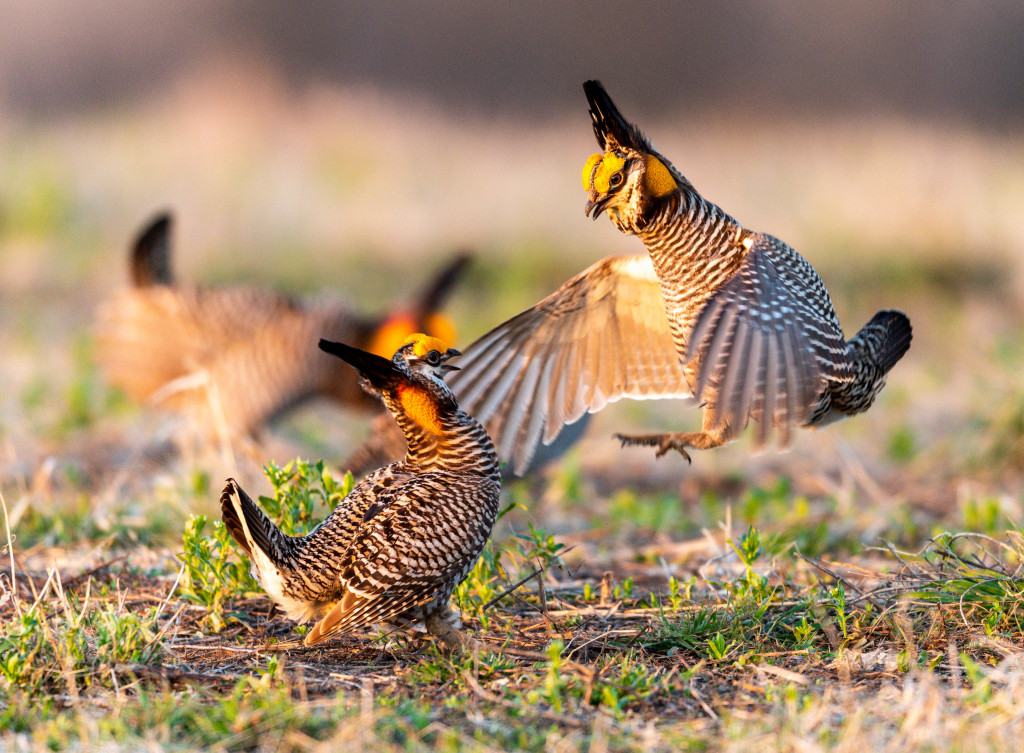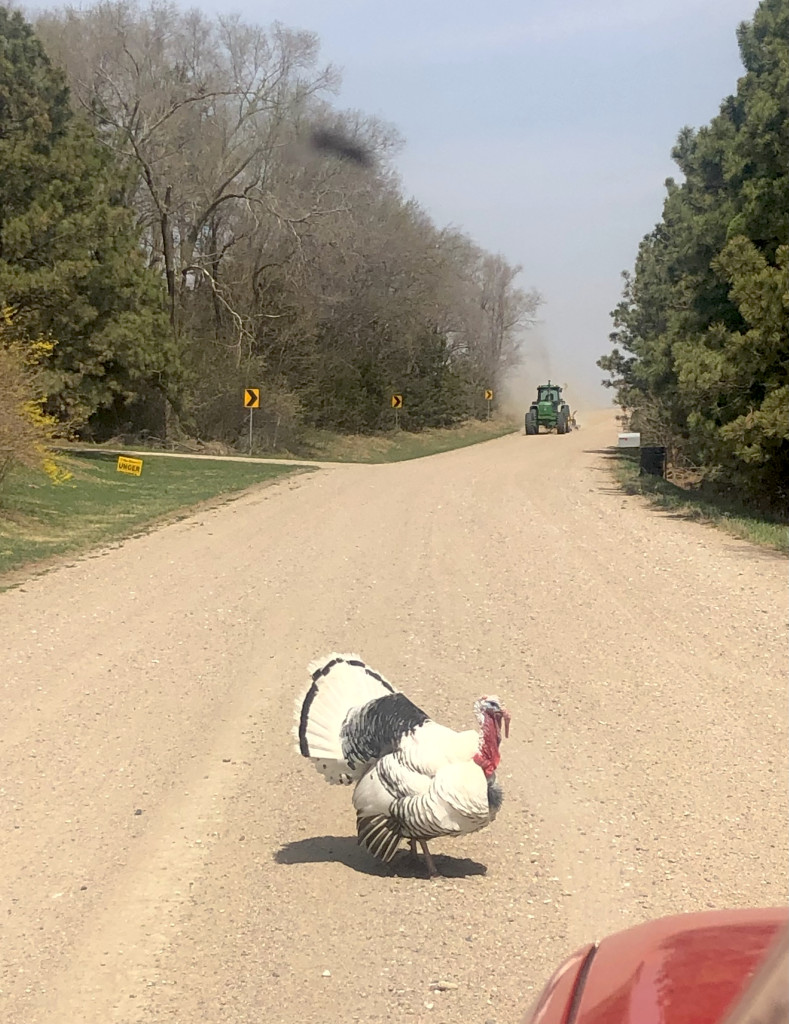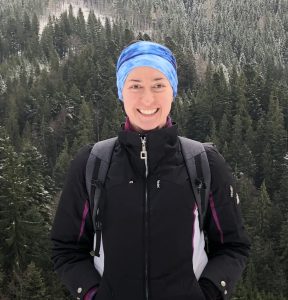Enlarge

By Allison Barg, University of Nebraska-Lincoln Research Graduate Assistant
Welcome back! We are now a little over halfway through the pheasant breeding season, a.k.a my field season. Here is an update on what’s going on in the field this week. If you missed reading Part I of this series, catch up here: http://magazine.outdoornebraska.gov/2022/04/a-researchers-field-season-part-i/
May 2, 2022
3:30 a.m. – If you read my last post, you may be thinking, “Wow, that seems a lot earlier than last time.” That is because pheasants do not care about what time it is; they only care about when the sun rises, and we care about the pheasants. So as the sunrise moves up, so do we. To arrive at my first point 1 hour before sunrise, I need to leave the house by 4:15 a.m., but waking up 45 minutes early seems a bit excessive, so I hit the snooze button.
3:50 a.m. – Alarm number 2. Much more reasonable. Coffee time.
5:15 a.m. – 8 a.m. – For more specifics on crow counts, see my first post. Last month, the wind put us behind, and this week, it’s the rain throwing off our plans. We can’t count in the rain, but more than that, most of my points are on dirt roads that are inaccessible when they get wet. I do know better than to complain about rain in Nebraska during a drought, though, so we’re making it work. Today, I’m taking advantage of the dry weather to get back to a few points in Cedar County that I couldn’t get to previously.

8 a.m. – Break time! After the counts are over, I take the opportunity find a nice spot for a snack break and plan the rest of my morning. This is the part of my day when I go back to each of my points to map the surrounding habitat. Since the goal of my research is to look for connections between habitat and pheasant abundance, it’s important that we take note of all habitat types and features. We have plenty of spatial tools that will tell us where there is grassland, crops, trees, etc.; and while we know that grassland is good for pheasants, we also know that not all grasslands are equal in terms of quality. We need to go beyond broad land- cover categories if we want to really dial-in on the relationships that are influencing pheasant populations.
Essentially, we need to be able to see the landscape as a pheasant would, and until we can find a way to do that remotely, the only method we have currently is mapping it ourselves. It’s important that we map out habitat at the same time we do crow counts because agricultural landscapes change FAST. One day, you have a field of untouched, 5-year-old grassland, and the next day, it’s been hayed to feed someone’s cattle. Unfortunately, there is no way for us to know these details in Lincoln, and so, I have to go back to each point to find out.

Above is an example of one of our maps. I use aerial imagery overlaid with the property boundaries of each patch, so that all I have to do is write down what I see in each section. We categorize grassland based on disturbance level: If it has been recently hayed or grazed, we will label it as highly disturbed; if it looks like it hasn’t been touched in a few years, it’s undisturbed; and anything in between is moderately disturbed. Pheasants use each of these categories in different ways. For example, undisturbed grassland is important during nesting season when females need tall grass with a lot of litter from previous years to keep their nests concealed. We map anything over a quarter acre in size, which means field corners, wind breaks and pesky patches of seasonal wetlands in the middle of fields all get mapped.

May 3, 2022
5:15 a.m. – Start crow counts. Today, I’m working in Antelope County.
5:56 a.m. – I’m on my third point of the day and found myself driving down a “road” – mostly a sandy trail between two pastures (it was a legal road, I checked) – where I found a greater prairie chicken lek! This is always exciting for me, because until this year, I had never seen a greater prairie chicken. They are cool animals, and the sounds they make absolutely do not sound like they should be coming from a chicken. If you’ve never heard it, consider this your invitation to look them up. Once I started listening for them, I actually hear them pretty frequently, but they are rarely close enough to see. I spent about 15 minutes watching them, which did put me a little bit behind, but what’s the good in being a biologist if you can’t sit and watch birds mate for a few minutes at 6 o’ clock in the morning?

May 4, 2022
11:30 a.m. – Crow counts this morning were uneventful, and I thought I might not have anything to write about today, but I didn’t have to worry. While driving around mapping habitat, I found myself in a rather unique traffic jam caused by a turkey that was not only displaying in the middle of the road, but gobbling at me and attempting to chase down my truck. I’m guessing it’s a pet turkey, and he must be used to trucks several times his size doing whatever he says because he absolutely did not back down. In fact, I found myself backing up the truck to keep him in my sight. The last thing I want is someone’s turkey running under my vehicle.
11:35 a.m. – Good news — a tractor came, and the turkey decided he’d met his match and got out of the way. What a day.

May 5, 2022
Rainy day! No counts today, but plenty of other work to do. It can’t all be driving around looking for birds.
May 7, 2022
4 a.m. – Leaving a little early today to drive to Butler county, part of my other study area in the Rainwater Basin. It’s a little too windy for counts in my usual counties, but my weather app tells me conditions should be better to the south, so I’m going to try it.
5:15 a.m. – Well … the weather app was wrong. The wind is a bit too strong to count in, but I’m here, so I’ll wait it out for a while and see if it dies down. It’s not the most exciting thing in the world, but this is what field work looks like. Sometimes, it looks like sitting in a truck on a gravel road listening to an audiobook, watching the sunrise and hoping that the wind dies down.

6:30-ish a.m. – The wind seems a bit calmer, and the clouds are moving away so I’ve decided to go ahead and do the counts. One of the benefits of surveying each of the points three times throughout the season is that it can help account for the fact that I might not be able to hear quite as well today as I would on a calmer day. We know that the number of pheasants heard at a point isn’t likely to be the true number of pheasants present every time, and we have methods to estimate what that number actually is. So later, when I go to analyze my data, I can enter wind speed and anything else that might affect how many pheasants I counted on a particular day and my estimate will account for that. The more counts we conduct at each point, the more likely it is that we will be able to get an accurate estimate of pheasant abundance.
8:30 a.m. – My early-morning long drive and hour of waiting for the wind to die down all paid off. I was rewarded by an encounter with this beautiful snapping turtle! She was working her way across the road and froze up half way when cars started passing her, so I pulled over and helped her the rest of the way.

If you, like me, are a person who can’t help but pull over for turtles, here are a few tips: 1) Always move them in the direction they were going. Turtles are stubborn creatures, and if you take them back to where they started, they will inevitably just try to cross again. 2) Never pick up a snapping turtle, or any other animal, by its tail. That could harm or even break the vertebrae in its back and cause it to die later. Instead, carefully scoop them up toward the back of their shell.
I’m sorry, did you think you were coming here just for pheasant content? Well, I promise more of that next time.
About Allison Barg
 Allison grew up outside of Mead, Nebraska, and received her bachelor’s degree from the University of Nebraska – Lincoln in fisheries and wildlife in 2016. After several years working on research projects on everything from bats to sea turtles, she returned to school to earn her master’s degree in wildlife management and conservation from the University of South Wales. Allison’s master’s research was based on western polecats and their interactions with road systems. In 2021, Allison moved back to Nebraska to begin her PhD at UN-L where she works in the Applied Wildlife Ecology and Spatial Movement (AWESM) Lab.
Allison grew up outside of Mead, Nebraska, and received her bachelor’s degree from the University of Nebraska – Lincoln in fisheries and wildlife in 2016. After several years working on research projects on everything from bats to sea turtles, she returned to school to earn her master’s degree in wildlife management and conservation from the University of South Wales. Allison’s master’s research was based on western polecats and their interactions with road systems. In 2021, Allison moved back to Nebraska to begin her PhD at UN-L where she works in the Applied Wildlife Ecology and Spatial Movement (AWESM) Lab.
The post A Researcher’s Field Season – Part II appeared first on Nebraskaland Magazine.
















